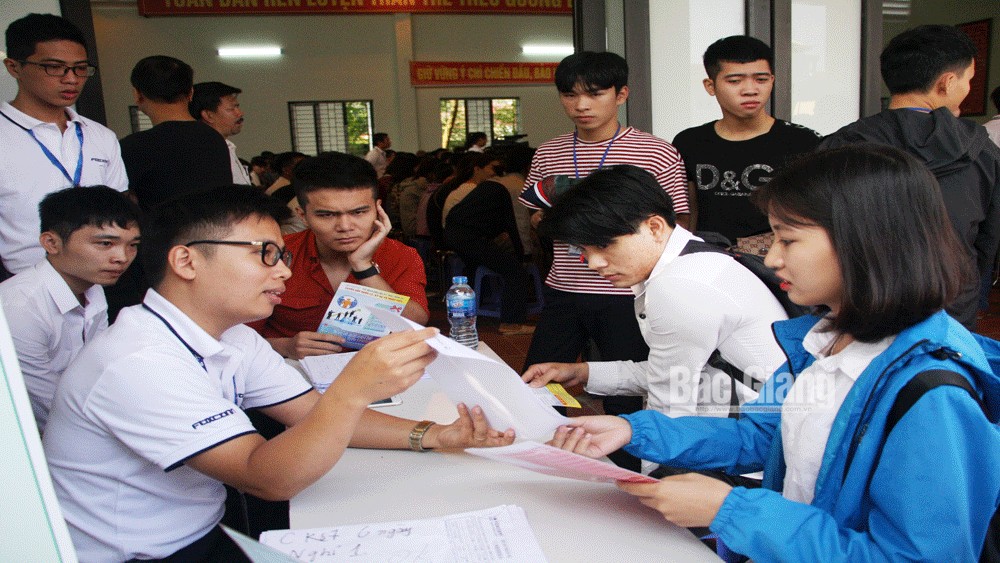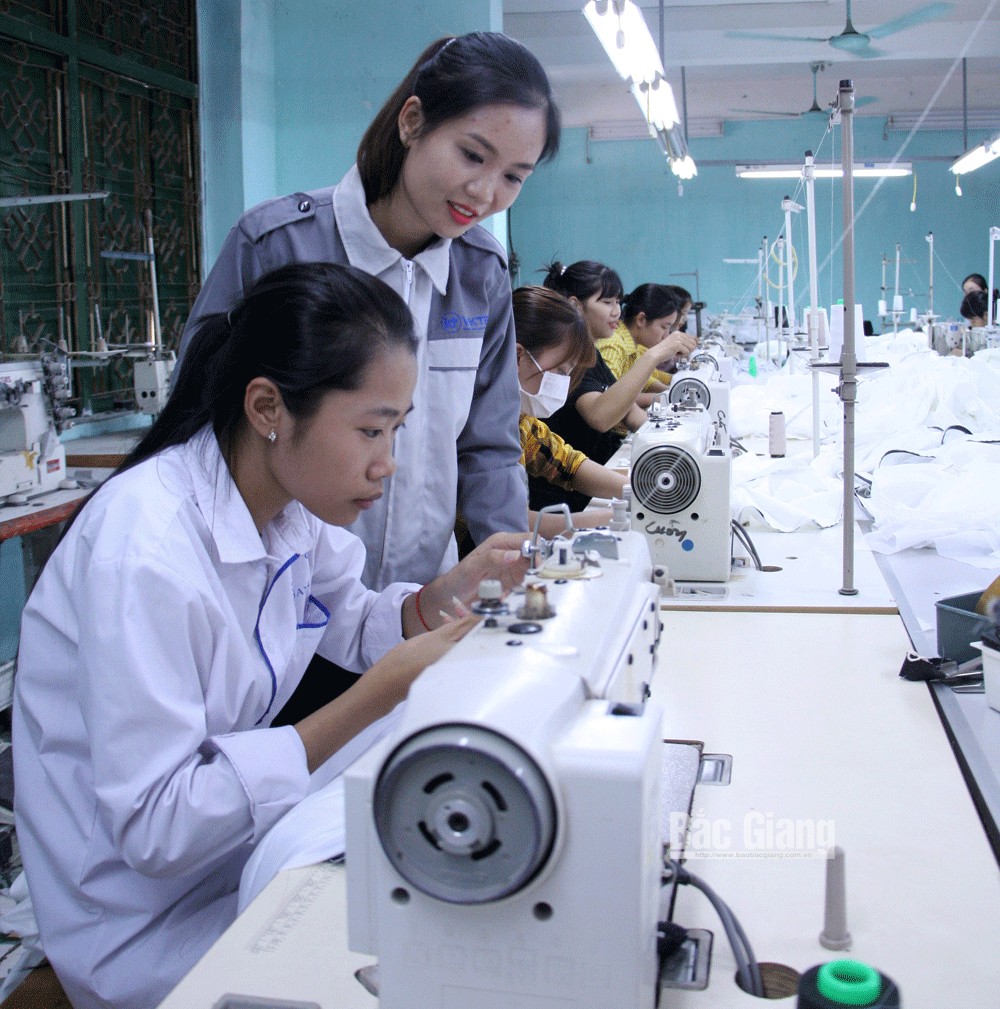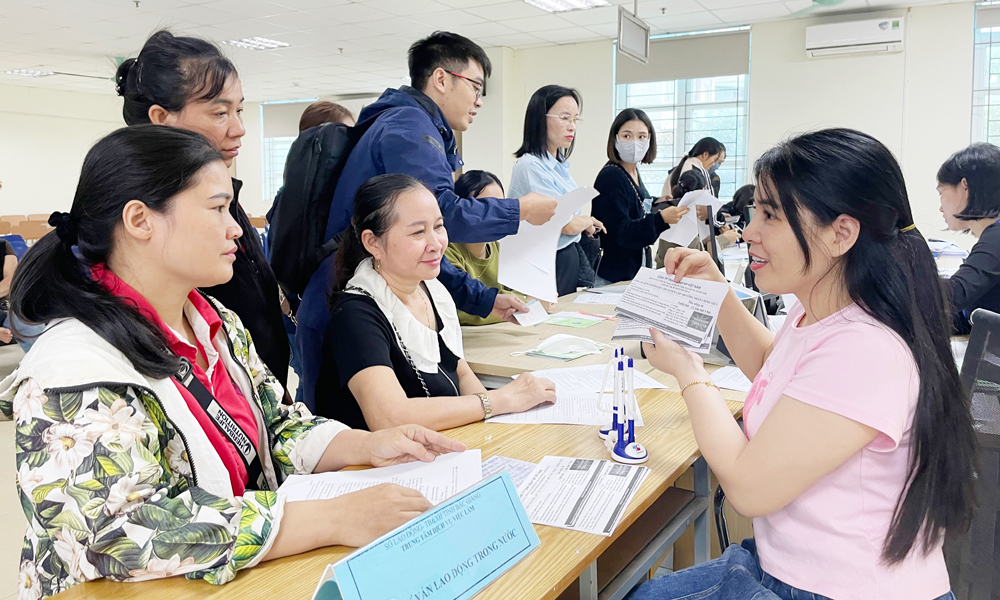Bac Giang reforms vocational education to improve human resources quality
Changing training methods
Reforming and improving the quality of vocational education is one of three component projects of the target programme on vocational education - employment and occupational safety for the 2016 - 2020 period approved by the Prime Minister in Decision No. 899/QD- TTg dated June 20, 2017. After nearly 4 years of implementation in the province, the project has obtained positive results, contributing to bringing the Law on Vocational Education into life and creating a better workforce.
 |
|
The Hong Hai Science and Technology Group coordinates with the provincial Job Service Center in organizing a job bazaar. |
According to the report of the Department of Labor, Invalids and Social Affairs, the province now has 41 vocational education establishments. On average, they enroll and train more than 32,500 people each year.
The number of labourers who find jobs after vocational training is 90 percent for college graduates and more than 80 percent for students graduating from vocational intermediate and primary schools and regular vocational training establishments. The rate of trained workers increases from 58.6 percent in 2017 to 66.6 percent in 2019 and is expected to reach 70 percent by the end of 2020.
For those results, besides investing in infrastructure facilities, vocational schools have actively renovated training methods to improve the quality of human resources. In 2013, in addition to enrollment for intermediate vocational training, the Yen The Mountainous Vocational Intermediate School opened a continuing education system at high school level.
Vocational training with focuses
Despite the positive results, the vocational education still faces many difficulties and challenges. The vocational training establishments have not yet chosen the right professions to meet the market demand; the quality of teachers is limited; the infrastructure and teaching and practice equipment are inadequate with out-of-date technology. Therefore, linking training with businesses’ needs is considered an important and decisive solution.
 |
|
A practice lesson of students of the Vietnam - Korea Vocational College of Technology. |
Since 2017, the enrollment of the Bac Giang Vietnam - Korea Vocational College of Technology has always exceeded the target. Vice Rector Do Thi Hong said the school trains 14 key occupations at national and regional levels. Especially, from the 2019-2020 academic year, in addition to 5 specialized faculties: Mechanics - Dynamics; Information Technology; Electricity - Electronics; Fashion Garment (intermediate level); and Culture, the school opened a new faculty: Fashion Garment (college level).
These are all professions that see large recruitment demands from enterprises, helping to increase job opportunities for learners. Thanks to the school-business joint training model, many final-year students of the school have been recruited by large companies and corporations such as Samsung Display, Hong Hai Science and Technology Group, and Canon Vietnam.
According to Truong Duc Huan, Deputy Director of the provincial Department of Labor, Invalids and Social Affairs, Party committees and authorities at all levels need to be more active in leading and directing the implementation of vocational education development tasks in the localities, especially identifying sources of labourers and segmenting students right from the junior high school level.
Schools and training establishments will focus on renewing curricula and investing in equipment suitable to the technology of enterprises so that each graduate student's qualifications and skills can immediately meet job requirements.
In addition to training and improving the qualifications of existing teachers, schools should have policies to coordinate with enterprises’ technical experts in teaching. The Labor, Invalids and Social Affairs sector proposes the Government and the province study and adopt a support mechanism to encourage non-State economic sectors to establish high quality vocational schools and training establishments to train technical workers.
Tuong Vi
 Bắc giang
Bắc giang













Reader's comments (0)